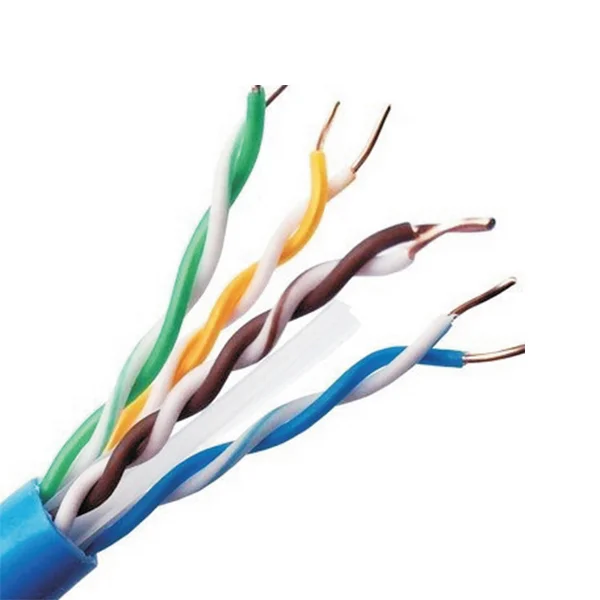- This topic is empty.
-
AuthorPosts
-
2025-10-16 at 5:16 pm #13974
In the era of high-speed internet and data-intensive applications, the importance of reliable network infrastructure cannot be overstated. Among various cabling options, Category 6a (Cat6a) network cables have emerged as a leading choice for businesses and advanced residential networks. This blog explores the features, advantages, installation practices, and future potential of Cat6a cables. In this blog post, as high performance Ethernet network cable manufacturing factory, Dingliang will share the benefits of category 6a network cable for data networks, its applications, etc.
Understanding Category 6a Network Cable Specifications
Category 6a network cables are an enhanced version of Cat6 cables, designed to support 10 Gigabit Ethernet (10GbE) over 100 meters of copper cabling. Unlike Cat6, which is limited in performance beyond 55 meters at 10GbE, Cat6a ensures full-speed connectivity for longer distances, making it ideal for enterprise networks.
The key specifications include a bandwidth of up to 500 MHz, improved shielding to reduce crosstalk, and enhanced signal integrity. Cat6a cables are available in shielded twisted pair (STP) and unshielded twisted pair (UTP) configurations, allowing flexibility based on network requirements.

Benefits of Using Category 6a Network Cables
Choosing Cat6a network cables offers multiple benefits:
-
High Data Transfer Speeds: Supports 10GbE for bandwidth-intensive applications such as video streaming, cloud computing, and data centers.
-
Reduced Crosstalk and Interference: Twisted pair design and shielding minimize electromagnetic interference (EMI) and alien crosstalk.
-
Future-Proof Network Infrastructure: Cat6a is compatible with older Ethernet standards (Cat5e and Cat6), ensuring seamless network upgrades.
-
Enhanced Signal Quality: Maintains signal integrity over longer distances compared to Cat6.
These advantages make Cat6a cables particularly suitable for commercial buildings, server rooms, and high-performance residential networks.
Comparing Cat6a with Other Network Cable Categories
When designing a network, understanding the differences between cable categories is essential. Compared to Cat5e and Cat6, Cat6a cables offer:
-
Higher bandwidth (500 MHz vs 100 MHz for Cat5e and 250 MHz for Cat6).
-
Superior 10GbE performance over full 100 meters.
-
Better shielding options, reducing interference in dense cabling environments.
While Cat6a cables are thicker and slightly less flexible than Cat6, the performance gains make them a preferred choice for high-speed networks.
Best Practices for Installing Category 6a Network Cables
Proper installation of Cat6a network cables is crucial to maximize performance:
-
Avoid Sharp Bends and Kinks: Excessive bending can degrade signal quality. Maintain a bend radius of at least four times the cable diameter.
-
Minimize Cable Tension: Do not pull cables with excessive force during installation.
-
Separate Power and Data Cables: Reduces potential electromagnetic interference.
-
Use Quality Connectors and Patch Panels: Ensures consistent performance and minimizes signal loss.
Following these practices ensures that your Cat6a cabling system maintains optimal performance for years.
Applications of Category 6a Network Cables
Cat6a cables are versatile and suitable for a wide range of applications, including:
-
Data Centers and Server Farms: High bandwidth and reduced interference support reliable 10GbE connections.
-
Enterprise Office Networks: Ideal for VoIP phones, high-definition video conferencing, and cloud services.
-
Smart Homes and Advanced Residential Networks: Ensures smooth streaming and high-speed internet connectivity throughout the home.
By choosing Cat6a, organizations can meet current networking needs while preparing for future bandwidth demands.
Future Trends in Network Cabling and Cat6a Relevance
While fiber optic cables are gaining popularity for ultra-high-speed networks, Cat6a remains highly relevant due to its cost-effectiveness, ease of installation, and compatibility with existing copper infrastructure.
Emerging technologies such as Power over Ethernet (PoE++), high-definition video streaming, and next-generation IoT devices increase demand for high-performance copper cabling. Cat6a provides a reliable solution for these evolving requirements.
Conclusion
In conclusion, Category 6a network cables provide a robust, high-speed, and future-proof solution for modern networking needs. By offering 10GbE performance over 100 meters, superior shielding, and compatibility with legacy systems, Cat6a ensures reliable connectivity for commercial, industrial, and residential applications. Proper installation and careful selection of cable types and connectors further enhance network performance, making Cat6a a smart investment for the long-term.
http://www.dlelectronic.com
Dingliang -
-
AuthorPosts
- You must be logged in to reply to this topic.






